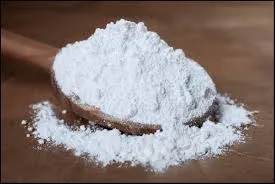
The Journey of Producing Monosodium Glutamate and Its Impact on Food Flavor Enhancement
The Process of Manufacturing Monosodium Glutamate
Monosodium glutamate (MSG) is a flavor enhancer that has become a staple ingredient in many cuisines worldwide, particularly in Asian cooking. The process of producing MSG involves both natural fermentation and chemical synthesis, resulting in this widely used food additive. This article delves into the manufacturing process of monosodium glutamate, highlighting its steps, raw materials, and significance in the culinary world.
Raw Materials
The primary raw material for MSG production is glutamic acid, an amino acid that can be derived from various sources. Traditionally, glutamic acid was extracted from protein-rich foods like meat and fish. However, modern production methods favor the fermentation process using carbohydrates as a substrate. Common sources include starch, sugar, and molasses, which provide the necessary sugars for fermentation. The carbohydrate sources, primarily obtained from corn or sugarcane, are first hydrolyzed to convert starches into fermentable sugars.
Fermentation Process
Once the hydrolysis is complete, the sugars are subjected to fermentation, which is the heart of the MSG manufacturing process. A selected strain of bacteria, typically *Corynebacterium glutamicum*, is introduced to the sugar solution. This specific bacterium is non-pathogenic and renowned for its ability to convert sugars into amino acids, particularly glutamic acid. Under optimal conditions, including temperature and pH control, the bacteria metabolize the sugars and produce glutamic acid as a byproduct.
During the fermentation phase, the medium is aerated to promote bacterial growth, and nutrients are added to enhance the fermentation efficiency. This process can take several days, during which the bacteria rapidly multiply and convert a significant portion of the sugars into glutamic acid.
monosodium glutamate process

Extraction and Refinement
After fermentation, the mixture contains a high concentration of glutamic acid, along with various byproducts and residual bacteria. The next step is to extract the glutamic acid from this mixture. This is achieved by neutralizing the fermented broth with sodium hydroxide, resulting in the formation of monosodium glutamate.
Following neutralization, the solution goes through a crystallization process. By evaporating excess water, crystalline MSG forms and can be separated from the liquid. The crystallization is a key step as it enhances the purity of the final product. Afterward, the crystals are typically dried and then milled into a fine powder, ready for packaging.
Quality Control and Safety
Quality control is an integral part of the MSG production process. Throughout manufacturing, samples are taken to ensure that the glutamate levels are within acceptable limits and that the product meets regulatory safety standards. MSG is generally recognized as safe (GRAS) by many health authorities, although there has been some debate over its effects on health, often referred to as the Chinese Restaurant Syndrome. Nonetheless, extensive research has shown that MSG is safe for most people when consumed in typical dietary amounts.
Conclusion
The production of monosodium glutamate is a fascinating process that combines traditional fermentation techniques with modern biotechnology. From sourcing raw materials to fermentation, extraction, and refinement, each step is crucial in achieving a high-quality flavor enhancer. MSG has significantly influenced global cooking practices, providing umami—a savory taste that enhances the flavor profile of many dishes. Understanding the process behind MSG not only highlights the complexity involved in its production but also underscores its importance in the culinary world.
-
Sodium Dichloroisocyanurate Safety Handling ProtocolsNewsJul.29,2025
-
Mining Chemicals for Copper Extraction Processes GuideNewsJul.29,2025
-
Fertilizer for Sale Shipping and Storage TipsNewsJul.29,2025
-
Dimethyl Disulfide as Sulfurizing AgentNewsJul.29,2025
-
Benzotriazole Safety Data Handling and Storage GuidelinesNewsJul.29,2025
-
Ammonium Bicarbonate Safety Handling Storage GuidelinesNewsJul.29,2025
-
The Transformative Role Of Trichloroisocyanuric Acid in Water TreatmentNewsJul.23,2025
Hebei Tenger Chemical Technology Co., Ltd. focuses on the chemical industry and is committed to the export service of chemical raw materials.
-

view more DiethanolisopropanolamineIn the ever-growing field of chemical solutions, diethanolisopropanolamine (DEIPA) stands out as a versatile and important compound. Due to its unique chemical structure and properties, DEIPA is of interest to various industries including construction, personal care, and agriculture. -

view more TriisopropanolamineTriisopropanolamine (TIPA) alkanol amine substance, is a kind of alcohol amine compound with amino and alcohol hydroxyl, and because of its molecules contains both amino and hydroxyl. -

view more Tetramethyl Thiuram DisulfideTetramethyl thiuram disulfide, also known as TMTD, is a white to light-yellow powder with a distinct sulfur-like odor. It is soluble in organic solvents such as benzene, acetone, and ethyl acetate, making it highly versatile for use in different formulations. TMTD is known for its excellent vulcanization acceleration properties, which makes it a key ingredient in the production of rubber products. Additionally, it acts as an effective fungicide and bactericide, making it valuable in agricultural applications. Its high purity and stability ensure consistent performance, making it a preferred choice for manufacturers across various industries.











